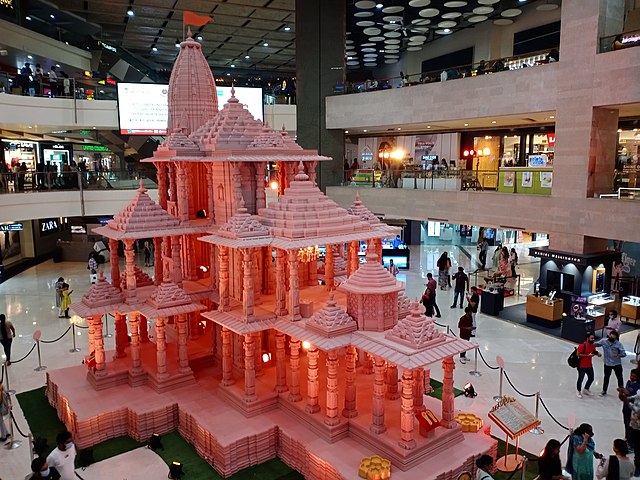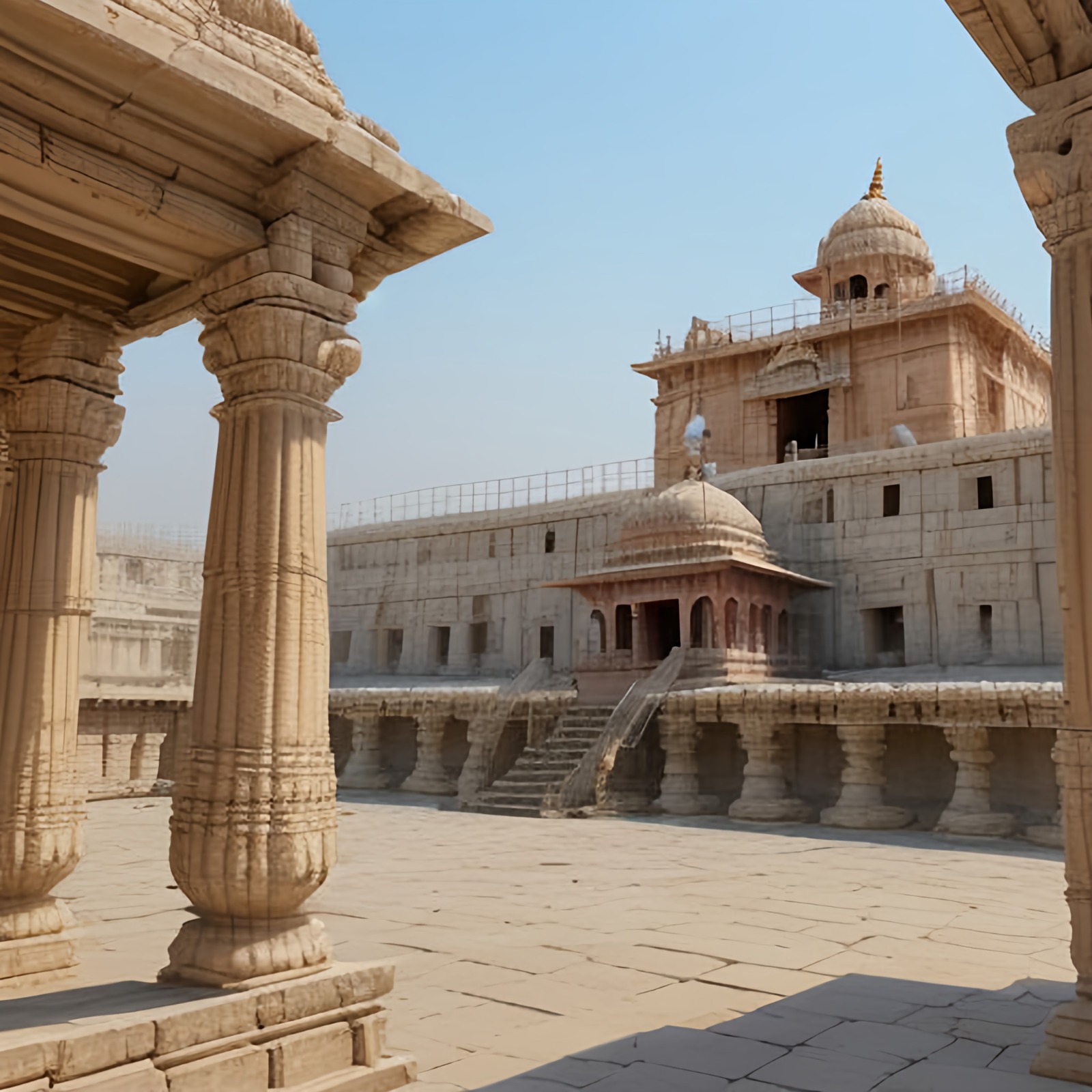Ayodhya Ram Mandir, an awe-inspiring temple currently under construction in Ayodhya, Uttar Pradesh, India, is a powerful symbol of faith and unity, resonating with millions of devotees globally. This monumental structure is dedicated to Lord Rama, a central figure in Hinduism, and is situated at the sacred site of Ram Janmabhoomi, believed to be the birthplace of Lord Rama. The construction of the Ayodhya Ram Mandir is a momentous undertaking, reflecting the cultural and spiritual heritage of the Hindu community. As the temple takes shape, it serves as a testament to the enduring significance of this sacred location and the deep-rooted beliefs that connect people across generations.
The Journey to Construction of Ayodhya Ram Mandir
The saga leading to the construction of the Ayodhya Ram Mandir spans decades and is marked by significant historical events. Initiated in the 1980s, the Vishwa Hindu Parishad (VHP) advocated for the restoration of the site for Hindus, aiming to build a temple in honor of the infant Rama (Ram Lalla). The contentious structure on the site was eventually demolished on December 6, 1992, triggering a period of unrest between Hindu and Muslim communities.
In a landmark decision in November 2019, the Supreme Court of India granted ownership of the site to the Hindu group, paving the way for the construction of the Ayodhya Ram Mandir. This legal resolution marked a crucial chapter in the complex history of the Ayodhya dispute.
Today, as the Ayodhya Ram Mandir takes shape, it symbolizes not only the religious and cultural aspirations of the Hindu community but also the legal and judicial journey that has defined its construction. The temple stands as a testament to resilience, resolution, and the pursuit of a shared heritage.

The Ayodhya Ram Mandir (Temple) Today
The Ayodhya Ram Mandir, a monumental project, entered a new phase on August 5, 2020, with the auspicious groundbreaking ceremony conducted by Prime Minister Narendra Modi. Currently, the construction is overseen by the Shri Ram Janmabhoomi Teerth Kshetra trust, and the pran pratishtha (consecration) ceremony is slated for January 22, 2024.
Architecturally, the temple follows the Nagara style, characterized by towering spires or shikharas. Crafted from pink sandstone, the temple spans 2.77 acres, featuring a vast courtyard and several smaller shrines devoted to various Hindu deities. This grand edifice stands as a testament to both religious devotion and architectural excellence.
The ongoing construction of the Ayodhya Ram Mandir symbolizes a significant milestone in India’s cultural and spiritual landscape, embodying the collective aspirations and faith of millions. As the temple takes shape, it continues to capture the imagination of devotees and stands as an architectural marvel in the making.
The Cultural and Religious Significance of Ram Mandir
The Ayodhya Ram Mandir holds profound cultural and religious significance, woven into the fabric of India’s heritage. This monumental structure, dedicated to Lord Rama, symbolizes the deeply rooted faith and devotion of millions. The journey toward the construction of the Ram Mandir is marked by historical events.
As a cultural symbol, the temple represents the revival of India’s ancient architectural and artistic traditions, echoing the Nagara style with its majestic spires and intricate design. Beyond its architectural magnificence, the Ram Mandir stands as a spiritual hub, drawing devotees seeking solace, inspiration, and a connection to their cultural roots.
The Ayodhya Ram Mandir transcends its role as a mere temple; it embodies the rich cultural and religious tapestry of India. More than bricks and mortar, it represents the unwavering faith and resilience of countless devotees across generations. The journey toward its construction has been marked by historical milestones and emotional significance.
As this grand edifice takes shape, it serves as a beacon of hope and unity, drawing people from diverse backgrounds to share in its cultural and spiritual significance. The Ayodhya Ram Mandir is not just a structure; it is a living testament to the enduring values and beliefs that bind the fabric of Indian society.
The anticipation surrounding its completion underscores the collective eagerness to witness the culmination of a long-cherished dream. The Ayodhya Ram Mandir, with its profound symbolism, continues to inspire reverence and stands tall as a beacon of cultural heritage, beckoning a future where shared values and traditions foster unity.



